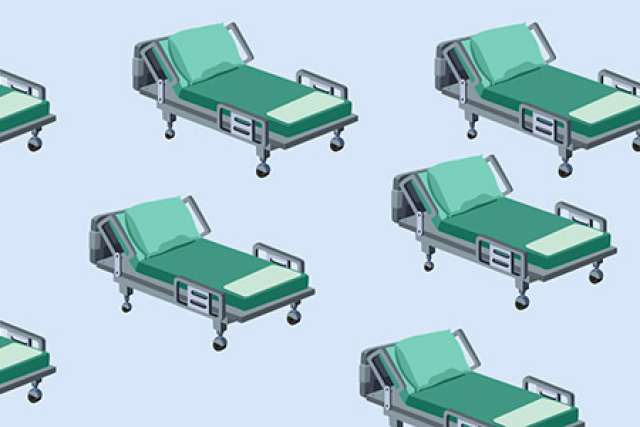UCLA Health has released to the community the system it used for projecting the expected hospital resources needed for the care of COVID-19 patients, a calculation that includes inpatient beds, ICU beds and ventilators.
The system focuses on projections of up to a few weeks, since such short-term predictions are highly accurate, while still useful to provide guidelines for policymakers. The system has been in place since mid-April, helping UCLA Health model the resource needs during the first COVID-19 patient surge in Los Angeles.
The system is now available for use by other health systems through a web interface hosted at UCLA.
During the initial wave of the COVID-19 pandemic in the U. S., hospitals took drastic action to ensure sufficient capacity, including canceling or postponing non-essential procedures, expanding the number of available intensive care beds and ventilators, and creating regional overflow hospital capacity. However, in most locations the actual number of patients fell short of the projected surge leaving unused resources. As a result, patients may have unnecessarily delayed needed care and hospitals lost substantial revenue.
“To help maintain hospital capacity and resources, guidance from federal agencies led us to focus surgical cases on only time-sensitive and essential procedures. This postponed many people’s access to interventional care,” says Richard Azar, Chief Operating Officer for UCLA Health. “When we resumed scheduling these procedures in May, we had both current patients and a backlog of patients to safely and quickly care for.”
With the number of COVID-19 cases and hospitalizations increasing in many parts of the country, health care systems are again preparing for a possible surge. However, plans for managing a new surge are fundamentally different. With greater availability of testing and personal protective equipment (PPE), as well as clinical advancements in treating COVID-19, health systems are trying to accommodate COVID-19 patients while simultaneously providing care for the rest of their patients.
“Accurate modeling of exactly what resources are necessary for COVID-19 patients is critical for reserving just the right amount for these patients so that we could plan what capacity can be used for other patients,” says Dr. Eleazar Eskin, chair of the Department of Computational Medicine, which is affiliated with both the David Geffen School of Medicine and the Samueli School of Engineering at UCLA.
“Our approach models the rate of change in the number of COVID-19 patients in the community, as well as the resources used by these patients as a function of their demographic characteristics, for example, their age,” says Dr. Eran Halperin, professor in the Department of Computational Medicine. “This results in accurate predictions of resource usage that can be adapted by hospitals in different parts of the country and we developed a publicly available tool for them to use.”
The system is now available for use by any health system, at stopcovid19together.org/hospital.



